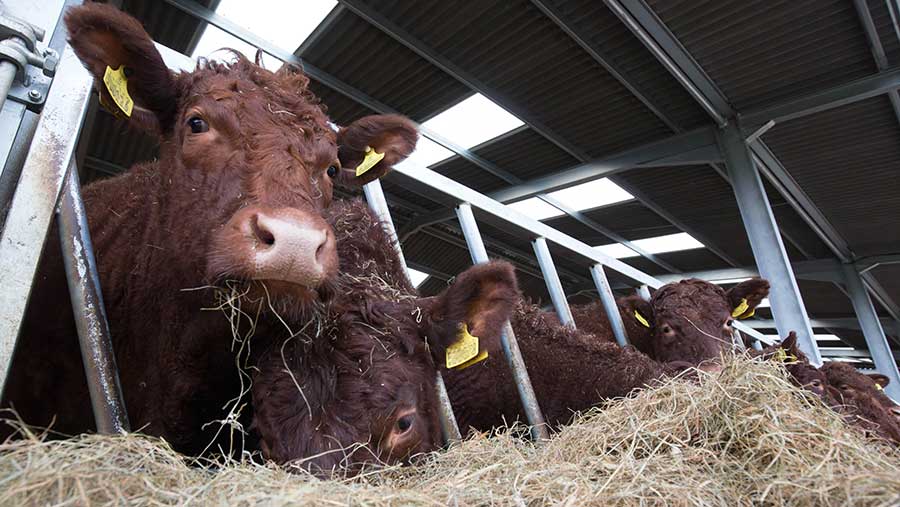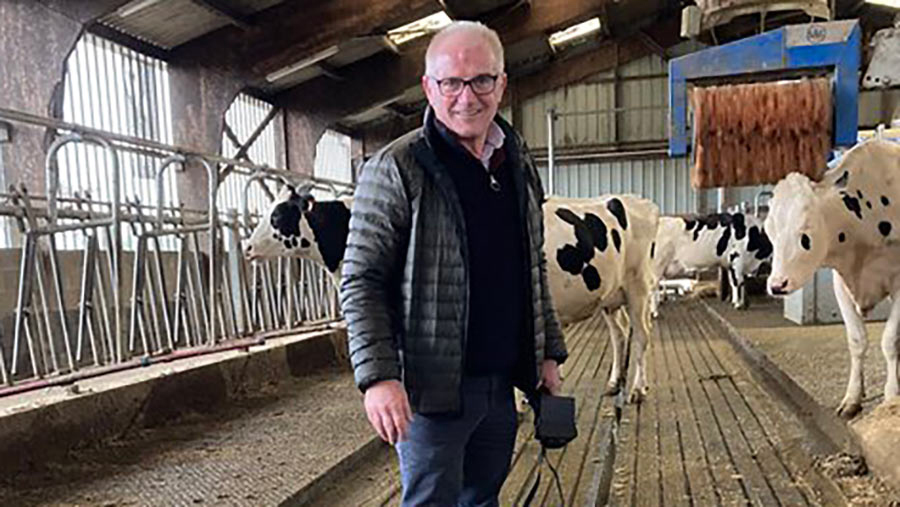Vet Dick Sibley casts doubt on Defra TB eradication plan
 © Tim Scrivener
© Tim Scrivener A Devon farm vet who was removed from Defra’s Bovine TB Partnership believes the government has “no chance” of eradicating the disease in England by 2038 with its current strategy.
In order to fully achieve officially TB-free status in England by 2038, Dick Sibley said 99.9% of cattle herds in the South West would need to be TB-free for the six preceding years.
But when he looks at the current TB figures in three counties in the South West, where the disease in endemic, he does not see how TB freedom can be possible with the current strategy.
See also: Defra removes pro-cull farmer from Bovine TB Partnership
Between them, Cornwall, Devon and Dorset have 7,989 registered cattle herds, and these generate about 33% of new TB herd incidents in England.
At the end of September 2023, the three counties had 652 herds not officially TB-free (OTF).
But for Defra to reach its TB-free target by 2038, just eight herds within the three counties would need to have non-OTF status by 2032, Mr Sibley said.
“I don’t think it’s possible to achieve OTF status by 2038 in England with what we are currently doing due to the inaccuracies of current testing tools and the uncertainty surrounding BCG cattle vaccination,” he told Farmers Weekly.
Mr Sibley sees a situation where OTF status could be achieved in the low risk and edge areas, but possibly not in the High Risk Area (HRA), which could severely affect trade and the ability to manage the disease there.

Dick Sibley © Dick Sibley
Vaccination ‘backstop’
If TB eradication is not possible in some parts of the HRA, especially in the South West, Mr Sibley suspects cattle vaccination will be Defra’s “backstop”.
“I was seen as a sceptic about cattle vaccination on the TB Partnership, and I am. But I’m open-minded about it,” he said.
“Before anyone can convince me it’s a great idea, I need to know how it’s going to work, what the objectives are and under what criteria we will encourage or compel herds to use the vaccine.”
Trials are currently under way in England and Wales to test a BCG cattle vaccine and the associated differentiating infected and vaccinated animals (Diva) diagnostic test. If everything goes according to plan, both will be rolled out next year, but there are concerns from within industry that the 2025 timetable may be slipping.
Mr Sibley believes BCG cattle vaccination may help to reduce case numbers and the overall infective load, but said “it won’t be a silver bullet”.
“It’s not good enough just to reduce the number of reactors,” he said. “We have to get herds free of TB and keep them that way, allowing them to trade without restrictions.”
However, he is also not convinced badger culling has been as successful as the government claims.
“Over 80% of Devon, Dorset and Cornwall has been in the cull zones for the last four years, yet 892 herds lost their OTF status last year. Is that success?” he asked.
“In my view, the more robust testing programme and the introduction of gamma blood testing has had the most significant impact.”
Mr Sibley said Defra liked to boast about rates of TB cattle slaughterings halving, which they had, to less than 20,000 a year, as “they see a reactor as a compensation cost”.
But from a farmer’s perspective, just one reactor was enough for a farm to be placed under TB herd restrictions, restricting cattle trade and requiring two or sometimes three clear tests before it could go clear.
Mr Sibley believes persistent and recurrent infection in herds, caused mainly by the failure of the skin test to detect positive cases, is responsible for many TB outbreaks.
Gamma testing fears
He said many cattle farmers were fearful of gamma testing, as they could lose 20-30% of the productive animals within their herd as a result, which could be “catastrophic” for finances.
During his three years on the TB Partnership, which ended in February, Mr Sibley co-chaired a sub-group looking at improving testing sensitivity. He produced a report and held a workshop on the issue, which received support from colleagues in the partnership and chairman John Cross.
But Mr Sibley said Defra “got very concerned about the idea”, adding: “That was the last I heard of it. It got buried.”
He said a more robust testing and culling policy could lead to more cattle being removed, but Defra could set up a hardship fund for TB-hit farmers who lose large numbers of reactors, or adopt a similar approach to Johne’s disease control whereby farmers with high TB-risk herds accept that they may be under restrictions for longer.
These and other novel ideas were suggested to the TB Partnership, but he said none were pursued.
Earlier this month, Farmers Weekly exclusively revealed that Cheshire dairy farmer Phil Latham, a supporter of badger culling, also did not have his contract on the TB Partnership renewed.
“Both Phil and I robustly and vocally challenged some aspects of the TB strategy to the partnership, and we were both let go,” said Mr Sibley.
Defra response
Defra says its TB Partnership retains a balance of interests and skill sets, with extensive experience and expertise in the farming industry, private veterinary profession, non-government organisations, academia, local authorities, and government. It has no plans to recruit additional members at this point.
A Defra spokesman said: “Bovine TB is one of the most difficult and intractable animal health challenges the livestock sector in England faces today, causing considerable trauma for farmers and costing taxpayers over £100m every year.
“Badger culling will remain a part of our toolkit and we have been clear our approach will be informed by the science.
“Our strategy has already led to a significant reduction in this insidious disease, and building on the progress made, we are now able to move onto the next phase, including wider badger vaccination, alongside improved cattle testing and work towards deployment of a cattle vaccine.”
